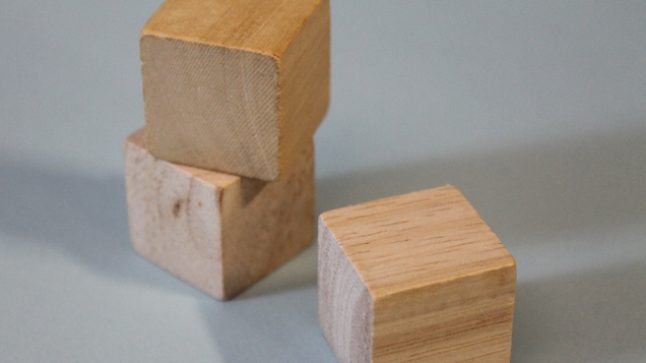Series: Focus on the Child
Why One-to-One Correspondence Matters

Children love to count. They count everything from the steps they take to get from their bedroom to the kitchen, to how many friends are in school each day. Counting helps them make sense of the world and to find out how many of something. With time and practice, children develop an understanding of the “rules” or principles of counting.
One such principle is known as one-to-one correspondence. It’s the idea that numbers correspond to specific quantities. For example, in playing a game, a child counts 1, 2, 3, 4, 5 dots on the die and jumps 1, 2, 3, 4, 5 spaces on the board because 5 dots correspond in quantity to 5 jumps. The number “five” always corresponds to that precise quantity, no matter what it is you are counting.
A hallmark of accurate counting, then, is when preschoolers begin to assign one number, and only one number, to each object as they count. We see this achievement when a child touches or tags each object in time with saying the counting words. And, this is no small achievement as it requires coordinating motor movement and speech with exact synchrony.
In this video, we can observe a young mathematician who is just beginning to coordinate his oral counting with tagging each block as he counts. After a few attempts, he shows some confusion between what he sees and what he says. The timing isn’t working out yet.
For full Focus on the Child video, click here.
But even when children tag every object one-to-one with a counting word, they may not yet have full understanding of one-to-one correspondence. Understanding the correspondence between a quantity and its number name (and numeral) is more than the action of tagging or keeping track while counting.
Children often first develop a sense of one-to-one correspondence by playing with toys that require matching one object to one space, such as putting plastic eggs in an egg carton or fitting shapes into a shape puzzle. Eventually children can put objects into one-to-one correspondence themselves, such as setting the table with one plate and one napkin for every seat. But children can do this without fully understanding that the corresponding number of plates, napkins, and seats is the same.
It’s important to discuss correspondences that occur naturally, and meaningfully, in the life of young children. When putting on winter gloves, does every finger find an opening? Are there enough glue sticks for everyone at the table? How many garages do we need to park all the toy trucks?
This student has a completely different question to answer. He needs to figure out how to fairly share cookies between two friends.
For a demonstration of this video being used by teachers, click here.
We watch as this student counts out all the cookies, dealing them one at a time, back and forth, between two plates. Though he counts the 10 cookies accurately, the action of dealing cookies is little more than a matching activity. While he says the two groups are the same, he does not fully understand that the equal groups correspond to the same number. So he counts the 5 cookies on one plate, and then needs to count the cookies on the other plate too, rather than knowing that it also has 5.
Deepen young children’s number knowledge through many experiences and conversations about how one-to-one matching creates equal groups—if you know the number in one of the groups, then you know the number in the other. It will take time. Understanding one-to-one correspondence will deepen children’s number sense and serve them well for counting and beyond.